Comment: See also:
Update (Sept. 5)The US National Hurricane Center has
announced that Irma has been upgraded to a Category 5 hurricane with wind speeds that could reach 175 mph (280 km/h). The hurricane is expected to reach the US and British Virgin Islands, along with Puerto Rico, Wednesday.
Update (Sept. 7)More Irma coverage from the past 2 days:
The mayor of Miami beach warned residents yesterday to get out ASAP,
saying, "I'll do anything in my power to convince them this is a very serious storm. This is a nuclear hurricane. They should leave the beach, they must leave the beach," he said. Monroe County officials are warning all residents of the Keys to
get out while they can.
Bryan Norcross, senior hurricane specialist at The Weather Channel, said Irma potentially threatens
every major Floridian city:
"When a storm is threatening like this, my day is pretty much 7 a.m. to 11 p.m., or maybe a little after. I start in the morning, where we have morning meteorology meetings, and I post extensively on Facebook. I stay up through the 11 o'clock advisory at night," he said.
Norcross said his Facebook posts reached 4.5 million people during the past week - including 900,000 on Wednesday morning - as Irma continued to gain strength.
"The west coast of Florida - including the Ft. Myers/Cape Coral/Naples area and Tampa Bay - are spectacularly vulnerable to storm surge. Much more so than the east coast, which still has many threatened areas," Norcross wrote during a lengthy Facebook post Wednesday morning. "If the storm looks like it could go up the west coast, evacuations are going to be required there, which will create an epic movement of people through the State of Florida.
"If this happens, and you are in an evacuated area, do not dawdle. Do not even think about dawdling. Immediate action will be required," Norcross wrote.
Whether or not this disaster scenario occurs all depends on "
the turn":
Irma has maintained 180+ mile per hour winds for more than 24 hours. The last storm to maintain long-lasting category 5 strength was Hurricane Allen, which only maintained 180+ mile per hour winds for 18 hours. Hurricane Irma is expected to maintain Category 5 strength through Friday before weakening to a category 4 storm on Saturday as it approaches Cuba and the Bahamas.
Once Irma reaches the Bahamas, our focus will shift to Irma's turn. All models have Irma making a turn to the north sometime between Friday and Sunday.
...
"You see many of the models showing this turn. This turn is going to be everything," says CBS Miami Meteorologist Craig Setzer. "The problem is, we don't know exactly when or where this turn is going to occur. An earlier turn takes to the east, a later turn takes it to the west of us, and a turn that's probably Saturday morning to Saturday night in that time frame could potentially take it to us, so we're going to be watching that very, very closely."
If Irma turns to the north before it reaches the 80 degree latitude line, the center of the storm would likely stay offshore, farther to the east. If it turns on or near the 80 degree latitude line, the track of Irma would likely be more devastating to South Florida. If Irma turns west of the line, Miami-Dade and Broward Counties would likely fare better.
While mindful of the dangers, billionaire Richard Branson
refused to leave his home in the Virgin Islands, vowing to stay alongside "our team" and weather the storm. A pro teen surfer has
died while trying to catch one of Irma's waves off Barbados. The four most solid buildings on Saint Martin island have been
flattened, meaning it's likely that practically all structures on the island have been destroyed or seriously damaged.
Weather Channel founder John Coleman had
this to say on Facebook: "Take a trip west and live. It you stay put your ssn on your arm with a sharpie."
Update (Sept. 8)After
11 dead, dozens injured, and thousands of homes destroyed on Caribbean islands, the French, British and Dutch governments have already rushed to aid the isles. At least 14 more have died on
Turks and Caicos Islands. Irma has been downgraded to Category 4, but is predicted to hit Florida on Sunday. Miami is prepping for Irma's onslaught, and forecasters think it could travel up Florida and into Georgia and South Carolina.
5.6 million people have been ordered to evacuate Florida. Shelters are already overflowing after a
chaotic start to the evacuation. The USS
Abraham Lincoln and other battleships are getting into position to provide humanitarian relief and support
if needed.
Meanwhile, 59k Americans are engaging in a somewhat ridiculous viral game to blow Irma away using
house fans. 1.2 million people have been affected so far, but that could increase to 26 million. This
reaction seems apt (sans the bit about global warming):
"Nature's gone crazy," mused Jeff Masters, meteorology director at the private service Weather Underground. "Welcome to the future. Extreme weather like this is going to be occurring simultaneously more often because of global warming."
View the latest predicted tracks
here. Another below:
As for Irma being the worst hurricane ever,
not quite. Irma tied 2nd place for windspeed, putting it in the top five; tied 12th for atmospheric pressure. And no, global warming isn't increasing the frequency of hurricanes. There has been no statistically significant increase over the past 150 years or so. Neither has there been an increase in the percentage of tropical storms turning into hurricanes.
Update (Sept. 9)The National Hurricane Center has
updated Hurricane Irma to a maximum level of Category 5. It is
lashing Cuba with strong winds and heavy rain after devastating several Caribbean islands. This is the first time a category five hurricane has hit Cuba in decades. But the Bahamas have largely been spared after Irma changed track.
Meteorologists
expect Irma to make landfall in the Florida Keys between 5am and 7am ET on Sunday. South Florida is under a state of emergency as residents evacuate or prepare to take cover. Maximum sustained winds are at 160 mph, but there will be stronger gusts of winds as well. The storm's wind speeds will increase after Irma passes Cuba and comes forth into the extremely warm waters close to the Florida Keys, forecasters at the National Hurricane Center said.
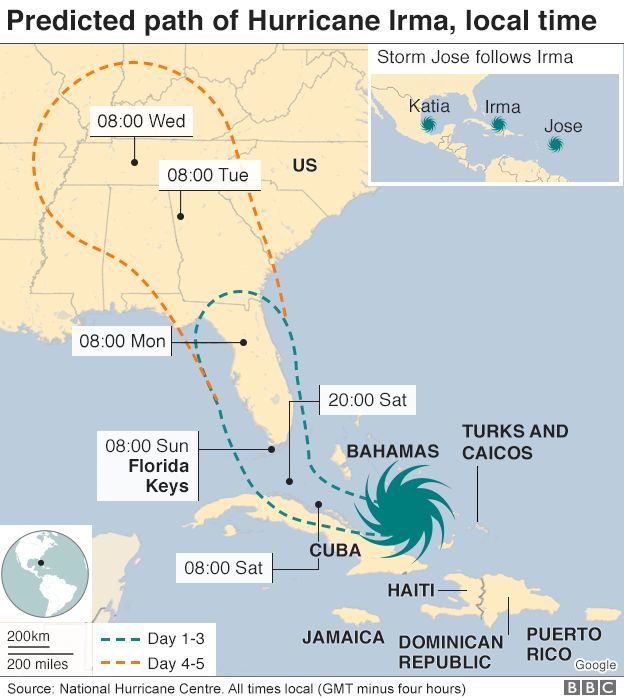
© National Hurricane Centre
5.6 million people, or 25% of the state's population, have been told
to leave Florida as the storm approaches. Hurricane warnings have been extended northward along the Florida Peninsula. At least 20 people are known to have died so far across the Caribbean.
EPA personnel are
working to secure some of the nation's most contaminated toxic waste sites ahead of the hurricane. Florida has 54 Superfund sites, six of which are near Miami in low-lying, flood-prone areas. A 2012 risk analysis concluded that flooding at such sites pose risks of spreading contaminated soil and groundwater and could contaminate personal wells.
Meanwhile
Hurricane Jose has moved closer to category five strength, with tops winds of 155 mph (250kmh) as it heads towards the eastern Caribbean islands ravaged by Hurricane Irma. In the Gulf of Mexico,
Hurricane Katia was making landfall north of Tecolutla, Mexico early today and is still rated a category one hurricane with winds of 75 mph (120kmh). Forecasters expected the hurricane to weaken quickly over the next 24 hours.
Hurricane Irma has reduced the tranquil
Caribbean island paradises to ruins:
More than 20 people died as extreme weather barrelled across the Caribbean bringing winds of up to 150mph. Whole neighborhoods have been turned-upside down on islands such as Barbuda, St Barts and the Virgin Islands.
...
Makeshift shelters are reportedly being made in undamaged buildings. The government of the Netherlands has stated that "severe damage" was caused to the Dutch side of Saint Martin.
In Barbuda up to 95% of the island's buildings were flattened, leaving almost all of the 1,600 inhabitants homeless.
Communication and power systems remain down in much of the British Virgin Islands.
St Kitts and Nevis escaped the full force of the storm while the Dominican Republic, Haiti and Cuba experienced flooding.
The Governor of Puerto Rico has had talks with President Trump to ensure emergency funding. More than half of the island's population is without power and three people died during the storm. One resident of Camuy was reportedly eletrocuted.
Update (Sept. 10) 09.00 CETThe first hurricane-force wind gust had been recorded in the Florida Keys, a low-lying island chain off the state's southern coast,
said the US National Weather Service. Florida faces the "most catastrophic" storm in its history as Hurricane Irma prepares to unleash devastating force on the state, including 120mph winds, life-threatening sea surges that could submerge buildings and an advance battery of tornadoes.
In Florida's south-west, officials expected sea surges as high as 15ft (4.5 metres), which can rapidly rise and fall. "Fifteen feet is devastating and will cover your house," Governor Rick Scott said. "Do not think the storm is over when the wind slows down. The storm surge will rush in and it could kill you."
Its most recent victim, Cuba, experienced 125mph (200kmh) winds on Saturday that damaged hotels and forced evacuations as far along the coast as low-lying areas of the capital Havana. The storm had been downgraded to Category 3 after making landfall as a rare Category 5 hurricane in Cuba early Saturday morning.
It has now been downgraded to Category 4 after gathering intensity over the warm waters of the Florida Straits,
according to the National Hurricane Center and is 70 miles from Key West and has sustained winds of 130mph (210kmh).
Update (Sept. 10) 19.30 CETA dire
warning from the National Weather Service about the south-west coast of Florida. The service has also announced an extreme wind warning for Collier County: its radar detected winds stronger than 115mph, "associated with the eyewall" of the storm, are approaching the coast 10 miles south of Everglades City. Nearby are Naples, Marco Island, Chokoloskee, and Golden Gate Estates.
In downtown Miami, waters are quickly rising in tandem with the gusting winds.
Governor Nathan Deal
has expanded the state of emergency to take in the entire state of Georgia. "The state of emergency now includes all 159 counties in Georgia. State government will be closed Monday and Tuesday for all employees except essential personnel."
The Mayor of Tampa has
said he and his fellow city residents "are about to get our own version of what hell looks like." Irma is expected to weaken to a category three hurricane as it moves northwards, making tonight the first time in decades that Tampa will have been struck by such a forceful storm.
Cubans are dealing with the aftermath of deadly Hurricane Irma, the most powerful storm to hit the country since 1932.
The eastern and northern coasts were the worst hit, the force of the storm sent flooding further inland and for a period on Saturday, Irma covered most of the island.
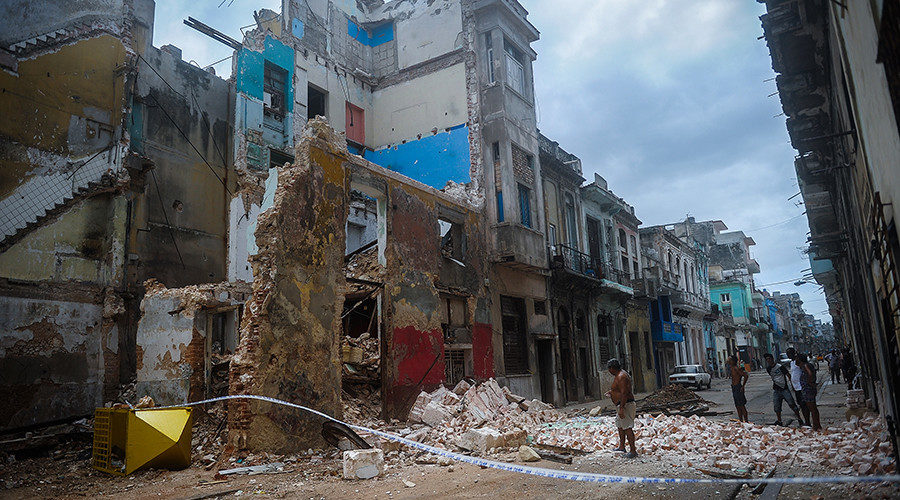
© Yamil Lage /Agence France-PresseCubans stand bt a collapsed building in Havana, on September 9, 2017.
ACN
noted that the Civil Defense put the provinces of Mayabeque and Artemisa and the capital Havana in an "alarm phase" at 8am on Saturday.
Authorities shut off power in large parts of Havana and evacuated around 10,000 residents, even though the storm was expected to miss the city by around 240km. Regardless of this distance, two blocks along Havana's famous sea front were flooded after the sea surged into the streets.
Irma sets new recordsAs of
September 9Intensity Measures
- 185 mph lifetime max winds - tied with Florida Keys (1935), Gilbert (1988) and Wilma (2005) for second strongest max winds of all time in Atlantic hurricane. Allen had max winds of 190 mph in 1980
- 185 mph lifetime max winds - the strongest storm to exist in the Atlantic Ocean outside of the Caribbean and Gulf of Mexico on record
- 185 mph max winds for 37 hours - the longest any cyclone around the globe has maintained that intensity on record. The previous record was Haiyan in the NW Pacific at 24 hours
- 914 mb lifetime minimum central pressure - lowest since Dean (2007) and 10th lowest in satellite era (since 1966)
- 914 mb lifetime minimum central pressure - lowest pressure by an Atlantic hurricane outside of the western Caribbean and Gulf of Mexico on record First Category 5 hurricane in the Atlantic since Matthew (2016) and first Category 5 hurricane in the tropical Atlantic (7.5-20°N, 60-20°W) since Hugo (1989)
- 3.25 day lifetime as a Category 5 hurricane - tied with Cuba (1932) for longest lifetime as Category 5
- 3 consecutive days as a Category 5 hurricane - the longest in the satellite era (since 1966)
- 7.25 major hurricane days - tied for 6th most in the satellite era (since 1966) 3.75 major hurricane days in the tropical Atlantic (7.5-20°N, 60-20°W) - trailing only Luis (1995) for major hurricane days in the tropical Atlantic
Integrated Measures
- Generated the most Accumulated Cyclone Energy by a tropical cyclone on record in the tropical Atlantic (7.5-20°N, 60-20°W) Generated more Accumulated Cyclone Energy than the first eight named storms of the Atlantic hurricane season (Arlene-Harvey) combined Generated the most Accumulated Cyclone Energy in a 24-hour period on record, breaking old record set by Allen (1980)
- 59.5 Accumulated Cyclone Energy units so far - the 3rd most by an Atlantic hurricane in the satellite era (since 1966) - trailing only Isabel (63.3) and Ivan (70.4)
- Generated more Accumulated Cyclone Energy than 15 entire Atlantic hurricane Landfall Records
- Leeward Islands: Strongest storm on record to impact the Leeward Islands defined as 15-19°N, 65-60°W for this calculation, with max winds of 185 mph.Okeechobee Hurricane (1928) and David (1979) were previous strongest at 160 mph
- Turks and Caicos: Closest approach of a Category 5 hurricane on record - The Bahamas: First Category 5 hurricane to make landfall since Andrew (1992)
- Cuba: First Category 5 hurricane to make landfall since the Cuba Hurricane of 1924
Stormchasers,
Simon Brewer and Juston Drake, risk their lives to get footage of the Hurricane. This footage was taken at Saddlebunch Keys in Monroe County:
Miami's "Wall Street of the South" looks like an ocean with roadways flooding with rivers of water.
Some Floridians got it into their heads that they can scare off the Hurricane by shooting at it and sponsored a Facebook event,
'Shoot at Hurricane Irma'. The Pasco County Sheriff's office was forced to issue a warning.
The event's popularity sparked a series of similar events, including
'Flame Throwing Hurricane Irma' and
'Sing "All Star" by Smashmouth So Loud the Soundwaves Turn Irma Away'.
In a
worst case scenario, the damage forecast estimates for Tampa, Florida include a
half a million homes and hundreds of casualties. A 2015 study conducted by Boston firm Karen Clark & Co stated that the damage could total $175 billion for the Tampa area alone. Meanwhile, hurricane grade winds have hit the Florida Keys:
Bahamians freaked out at as the outgoing hurricane
sucked the water from Long Island Bay.
The ominous-looking occurrence was in fact caused by a combination of low tide, low pressure and strong winds in the right direction, which literally pushed the water away from the long narrow bay. The phenomenon has been dubbed
"reverse storm surge" by some of those explaining it online.
Update (Sept. 11) 08.00 CETThe National Hurricane Center (NHC)
has downgraded Irma to category 1 and is "weakening" as it heads north of Tampa. Four hundred miles wide, Irma initially moved at 8mph, slower than forecast, and lost strength as it raked the peninsula. Irma made landfall on Marco Island as a category 3 storm, after hours of blasting south Florida with stinging, near horizontal rain, and sudden tornadoes.
The most immediate threat from the storm is the possibility of storm surges. The critical point could come at high tide, the USNHC
said, and bring up to 15ft (4.5m) of water flooding inland in the Tampa area. With concerns that Florida toxic materials could leak scores of Environmental Protection Agency staff have been working to secure equipment and isolate hazardous materials at Florida's 54 Superfund sites in the hours before Hurricane Irma made landfall - two weeks after similar sites were damaged by Hurricane Harvey.
Superfund sites are heavily contaminated former industrial zones. However, the EPA "can't guarantee it 100 percent," that there will not be contamination following the storm, Senator Marco Rubio
told AP.
More than 3.4 million homes in the state are without power, and parts of the city of Miami are under water. Drone footage captured the severe damage and flooding in Naples.
Yesterday President Donald Trump
approved a major disaster declaration for Hurricane Irma in Florida which authorizes 100 percent federal reimbursement for 30 days in all counties for emergency protective measures, such as the costs of running emergency operation centers, hurricane shelters and related expenses.
Update (Sept. 11)Some cities were
caught of guard by Irma over the weekend due to an unexpected shift in the hurricane's path. Naples, for example, didn't have time to evacuate once forecasters warned it was headed their way. The turn put
Tampa in Irma's path - Tampa hasn't been hit by a hurricane since 1921. The Irma survivors
in the Caribbean braced yesterday for Jose and armed looters. Even as Irma moved away from Cuba over the weekend, 6-meter waves surged on Havana coast, flooding homes and streets up to 600 meters into the city. Thankfully, as of yesterday there were
no reported deaths. 5000 tourists had to be evacuated from the coast.
The
NYT has a harrowing
account of those who survived Irma on St. Martin:
"All the food is gone now," Jacques Charbonnier, a 63-year-old resident of St. Martin, said in an interview on Sunday. "People are fighting in the streets for what is left."
In the few, long days since Irma pummeled the northeast Caribbean, killing more than two dozen people and leveling 90 percent of the buildings on some islands, the social fabric has begun to fray in some of the hardest-hit communities.
Residents of St. Martin, and elsewhere in the region, spoke about a general disintegration of law and order as survivors struggled in the face of severe food and water shortages, and the absence of electricity and phone service.
The
Miami Herald summarizes this morning's Irma developments:
Hurricane Irma left a trail of damage across South Florida: flooded streets, downed trees, crushed cars, collapsed cranes, leaky homes. The long slog of assessing the damage across the region began Monday. Miami-Dade and Broward counties were spared the worst of the storm, but the Florida Keys were hit hard. Ten people were declared dead in Cuba. Now, Jacksonville is flooding.
Florida was hit from
coast to coast with winds up to 130 mph, before downgrading to Cat. 2 (with speeds of approximately 100 mph). Water surged into Miami's streets at least 3 blocks from shore.
Pinellas County sealed off all access until damage can be assessed: "Sheriff's deputies warned citizens to stay off all county roads because of hazardous conditions, including traffic light outages, downed powerlines and significant debris blocking roadways." The Everglades were
lashed by Irma: extreme wind gusts, impassable roads, 4- to 5-foot flooding due to the surge.
"(The storm) would come as a hammer and just snap a tree as if it were a twig," he said. "It was like buckets of water on the corner of the house," said his partner, Marlene Sassaman.
Similar damage in
Tampa Bay: downed trees and power lines
block roads. By then, Irma had
weakened to Category 1 (85 mph). Forecasters expect Irma's center to stay inland over Florida and then move into Georgia, Alabama and Tennessee.
6 million Floridians are now
without power
Florida's largest utility reported that the storm had knocked out power to nearly three-quarters of its customers. More than 6.5 million residents across the state woke up Monday to no electricity.
NHC officials said the storm's center was moving toward Florida's northwestern coast and could cross the eastern Florida Panhandle into southern Georgia Monday afternoon, moving into southwestern Georgia and eastern Alabama by Monday night and Tuesday morning.
1.5 million in Georgia are
without power, two deaths
Nearly 1.5 million Georgians were without power on Monday as Irma continued its slow march through the state.
Two deaths in the state have been blamed on the tropical storm so far. One was a 55-year-old man killed after a tree smashed through his home in Sandy Springs. He was sleeping at the time. A South Georgia man died after heavy winds swept him off his roof Monday morning in Worth County. Neither has been publicly identified.
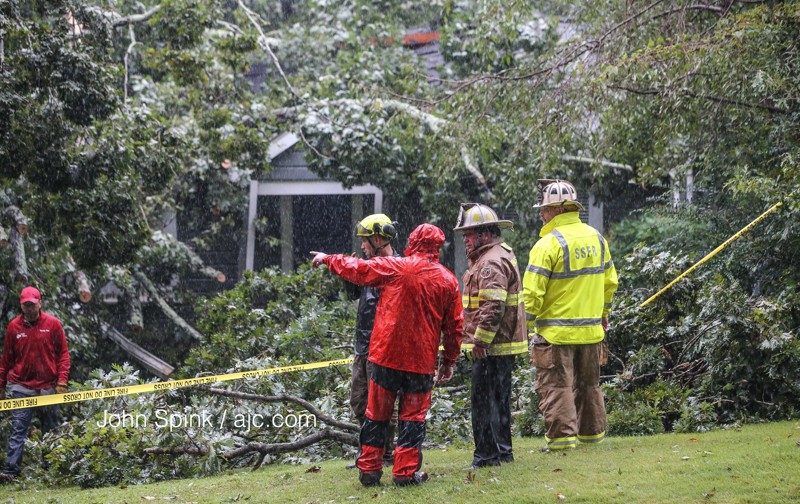
© John Spink/The Atlanta Journal-ConstitutionA 55-year-old Sandy Springs man was killed when a tree crashed into his home.
Update (Sept. 12)Damage in around Florida continues to be assessed, with state authorities now determining where and how conditions will permit things to be brought
back to normal. In Miami-Dade and Broward Superintendent Alberto Carvalho said the following:
Miami-Dade public schools will almost certainly remain closed through Wednesday, and may stay shuttered until Monday as the system unwinds shelter operations at dozens of schools, cleans up damage and monitors the status of the county's largest single workforce.
[...]
"We cannot reopen schools until all shelters are cleared. We cannot reopen schools until all schools have been inspected," he said. "Lastly, our workforce, 52,000 strong, a lot of them migrated north to avoid the storm. Unfortunately the storm followed them. They need to be able to return to Miami."
There were 42 public schools serving as shelters and some are on generator power. Many students and their families used these over the weekend as Irma battered South Florida. Still others fled the region ahead of the storm and it will take some time to return to their homes and routines.
In Miami, fallen trees and downed power lines have blocked roads and created
hazardous conditions:
City officials said there are several dangerous areas with downed power lines and debris that need to be cleared. While teams are clearing the city, they ask residents in the city not to leave their homes.
"We have power lines down, we have trees blocking the road, we have some gas leaks around Miami Beach, we have power outages everywhere," said Mayor Philip Levine. "We have crews all over the city clearing the roads. We want the people of Miami Beach to return as soon as possible and as safe as possible. I beg and plead for everyone's patience, we want everybody to come back but we want you to come back in a safe mode."
Not all the news out of Miami was bad however:
"We are thankful that the flooding Miami Beach had was minimal. The areas where we raised our roads, put in pumps, put in portable generators, fared very well. There was no flooding whatsover. We are very, very happy about that," he said.
On Tuesday, residents will be allowed to re-enter first, followed by business owners, their employees and contractors.
...but the devastating impact of Irma on the Florida Keys caused officials to make
this statement:
After Hurricane Irma ravaged the string of islands known as the Florida Keys, officials are now warning tourists and residents to stay away until further notice, noting: "The Keys are not open for business."
Houses and mobile homes were uprooted and other infrastructure was destroyed, while an innumerable amount of boats in the Keys also suffered damage from Irma's powerful winds.
In a tweet Monday morning, a WFOR reporter said "it's hard to describe" the lower Florida Keys, but it could be best described as a "war zone."
"For most of the Florida Keys, there is no fuel, electricity, running water, or cell service," Monroe County officials said in a news release.
As if to underscore that natural forces like Irma affect people from all strata of society, we learn that political pundit Milo Yiannopoulos
wasn't left out of the fray:
Milo Yiannopoulos says his house in Miami has been destroyed by Hurricane Irma.
Posting a picture of the roof having been torn off a building in the city's West Brickell area, he commented: "MY HOUSE IS GONE".
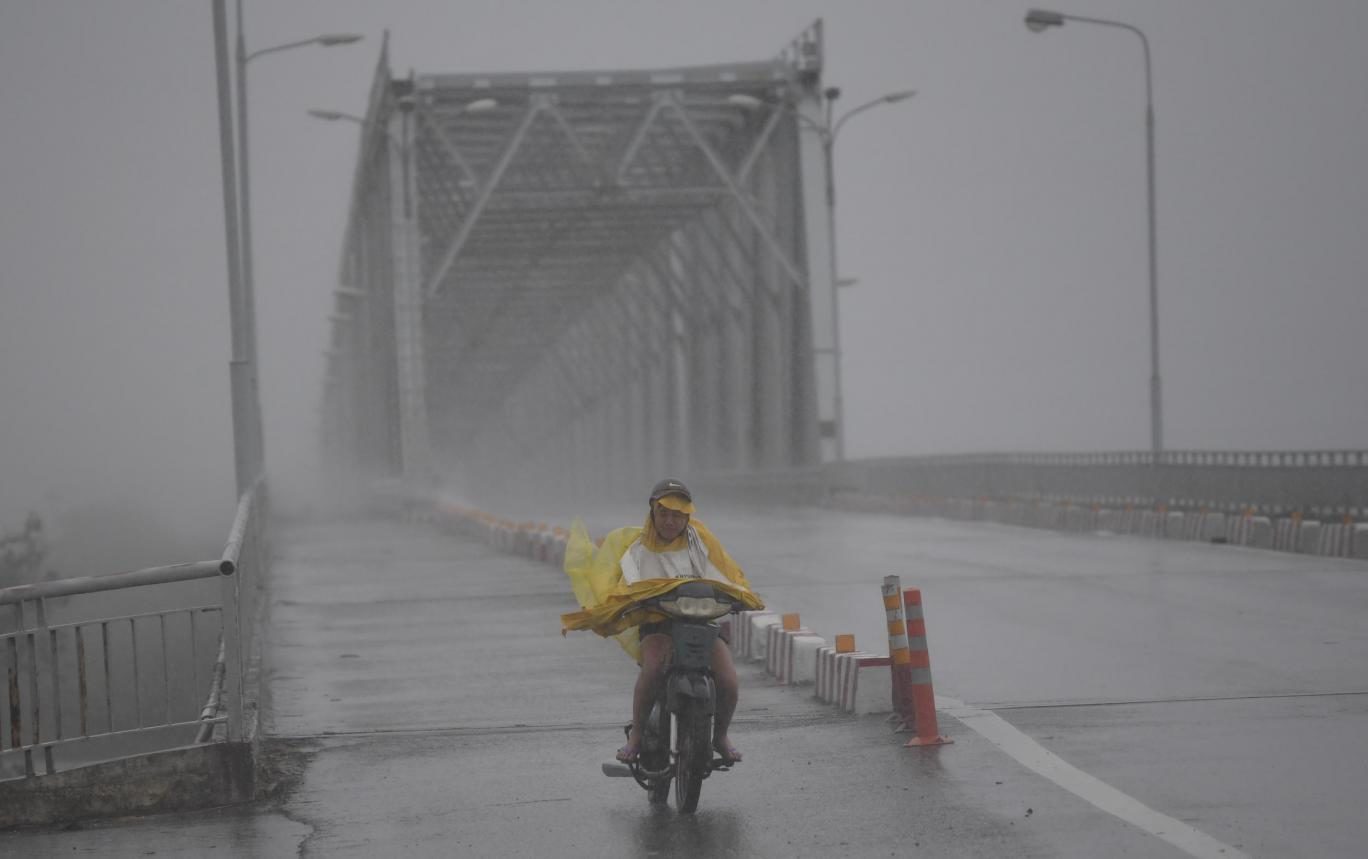
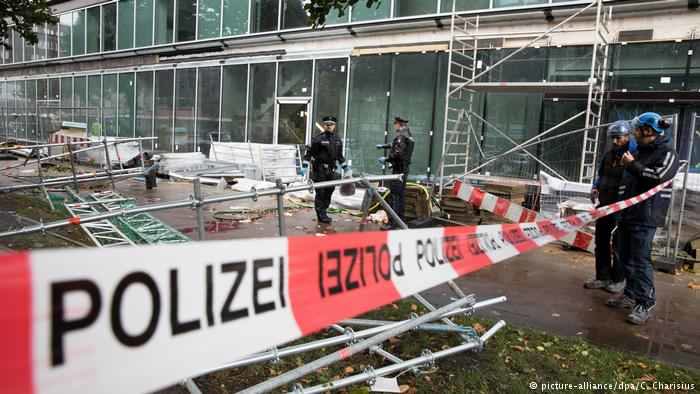
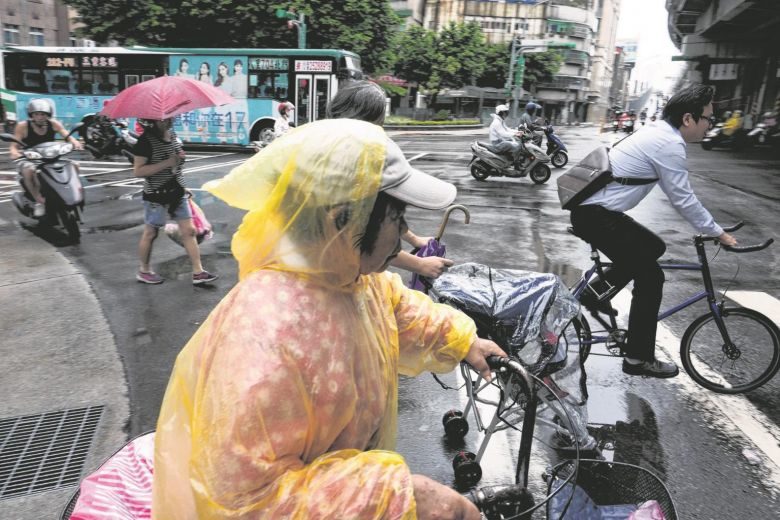

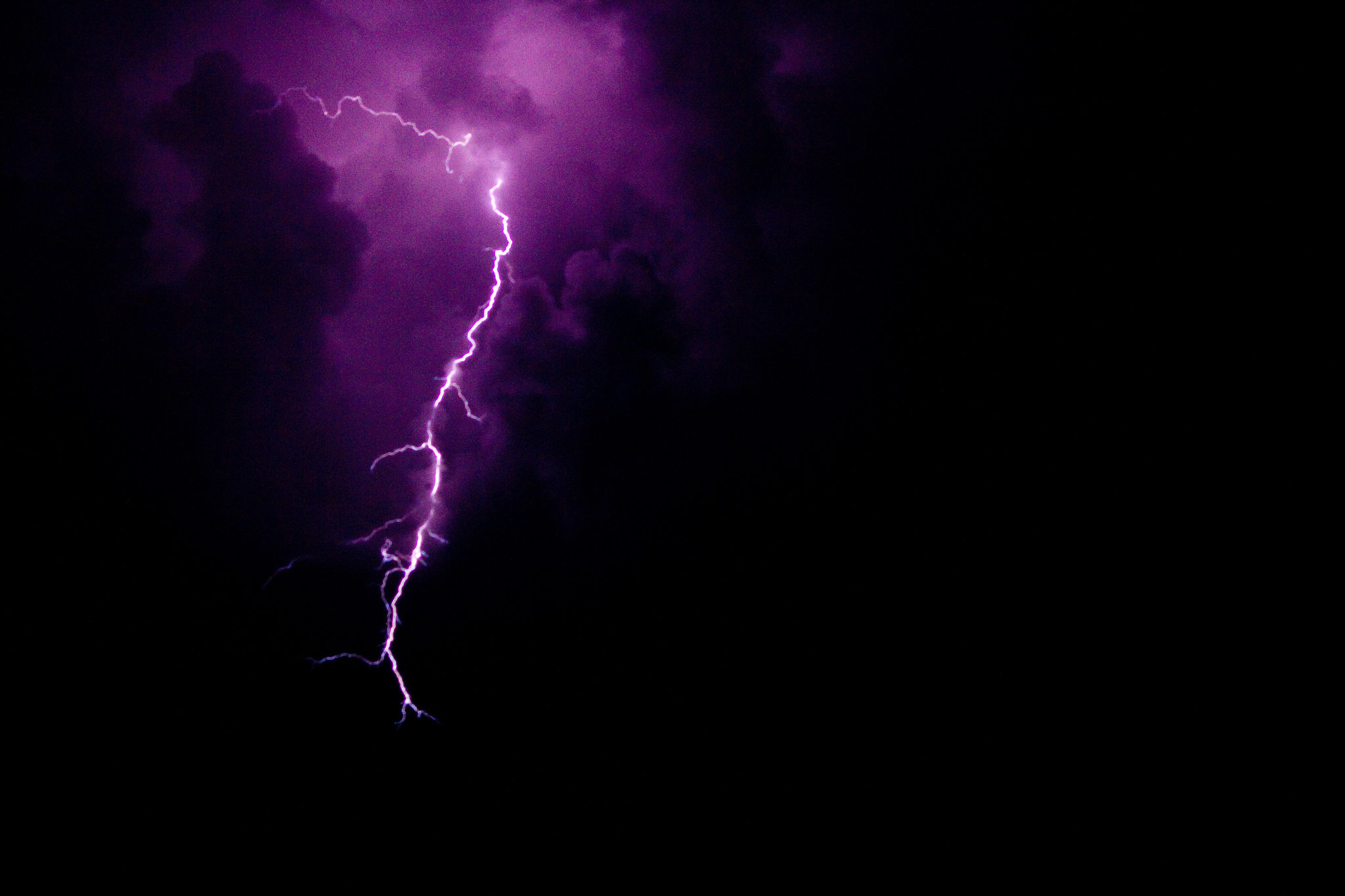
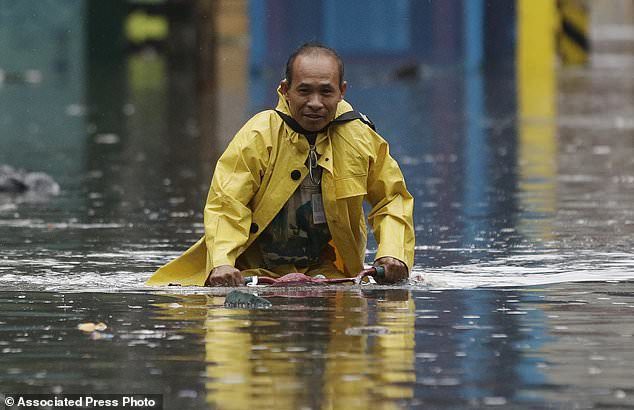
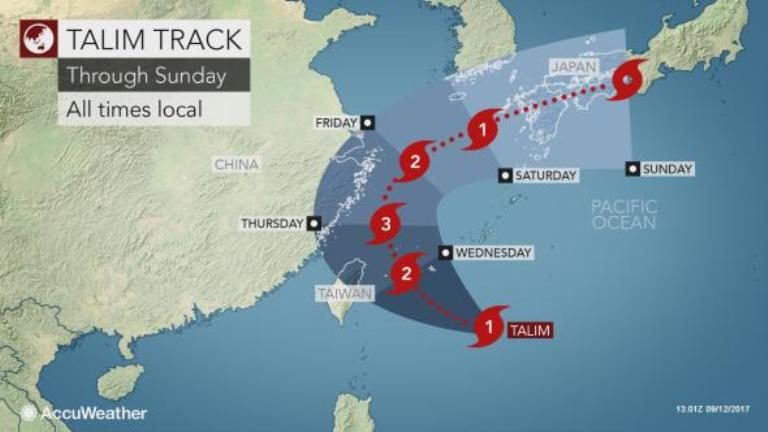
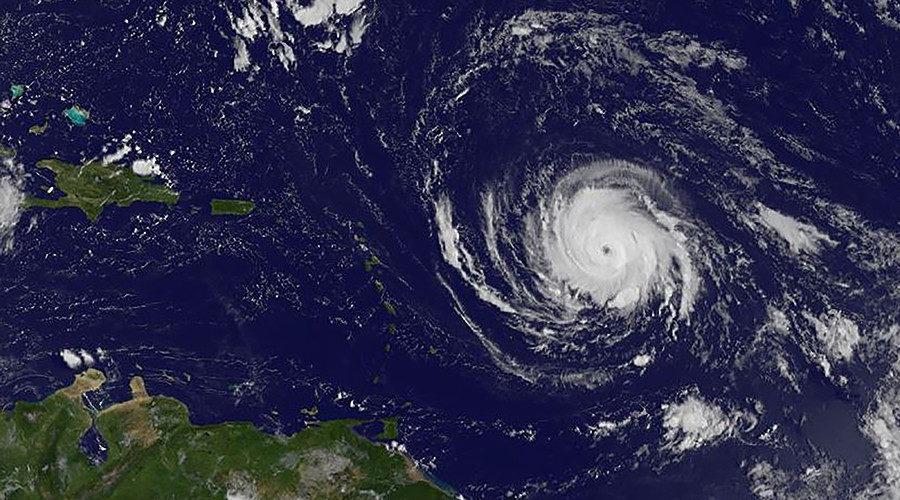
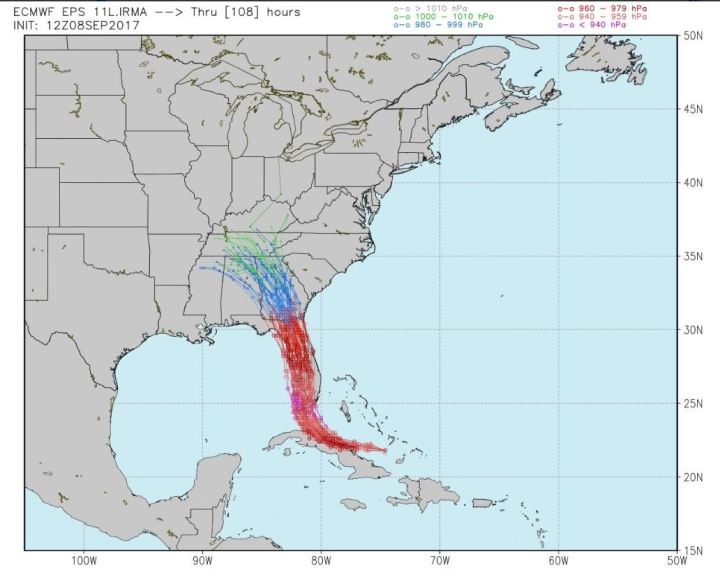



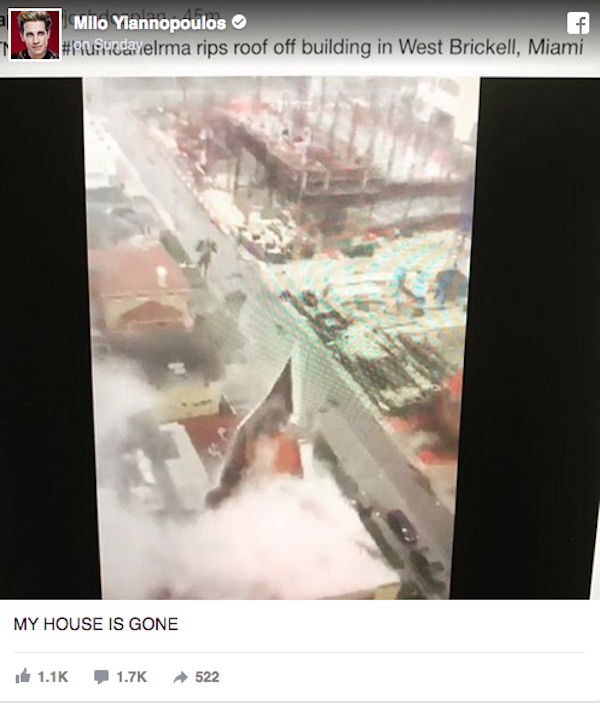
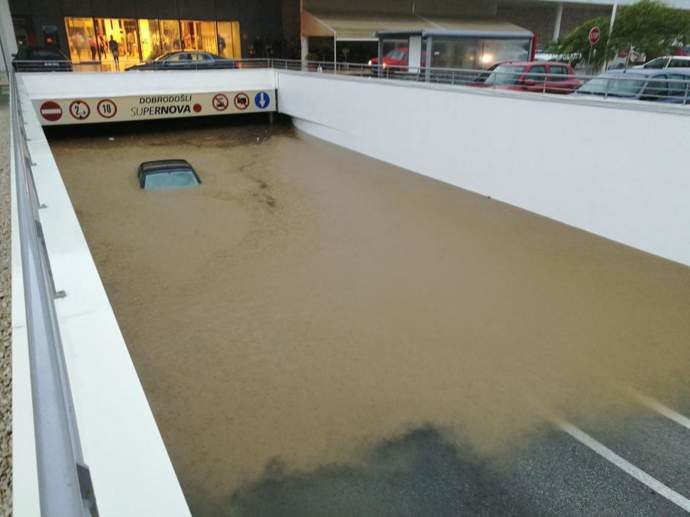



Comment: